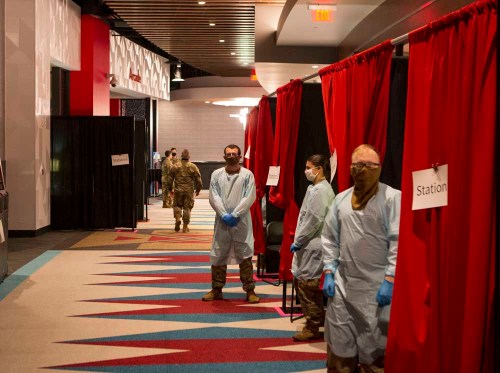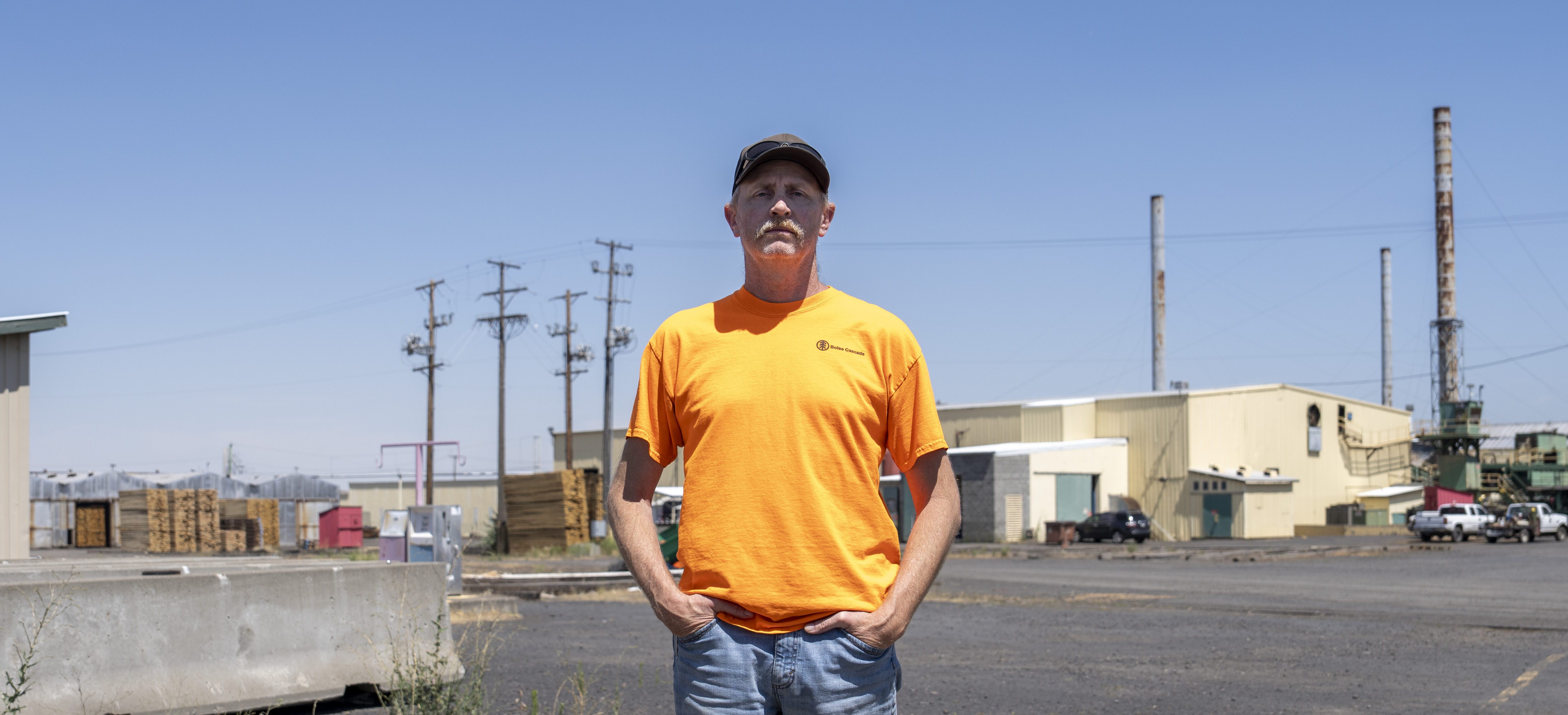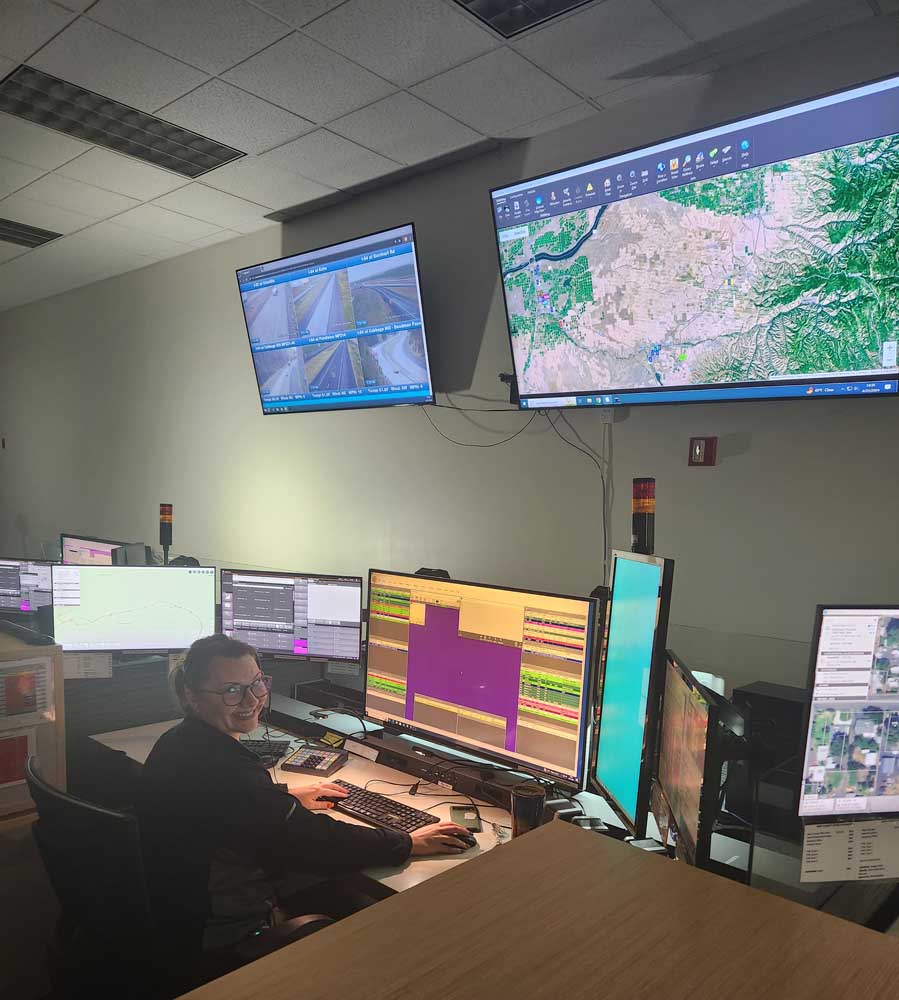CTUIR and Oregon National Guard vaccinate hundreds in two-day effort at Wildhorse Resort & Casino as tribes move toward reopening
Published 5:00 am Thursday, February 25, 2021

- Oregon National Guard members await their next patients during a COVID-19 vaccination clinic at Wildhorse Resort & Casino in Mission on Tuesday, Feb. 23, 2021.
PENDLETON — Sean Soaring Eagle cannot count how many of his family members live on tribal land.
An enrolled member of the Confederated Tribes of the Umatilla Indian Reservation, Soaring Eagle joined the Oregon National Guard to learn discipline, motivation and become active in the community where he grew up. It has brought him closer to family, but during the pandemic, that essential lifeline was cut short, bringing with it a feeling of isolation.
Trending
“My biggest struggle is being alone when I am,” he said. “I’m usually with my own thoughts, not talking to anyone, not doing anything. So that’s hard to be like that. To be in your own little pot by yourself.”
A tall, sturdy but soft-spoken 20-year-old who loves cold weather and reading fantasy novels, Soaring Eagle has witnessed the loss the pandemic has brought to his community.
“It’s hard seeing my friends and family who have had family very close to them die — mothers, brothers, friends,” he said. “It’s hard to know that there is not a lot I can do to comfort them. There’s not a lot I can say to them that could make them feel better.”
But on Tuesday, Feb. 23, his desire to serve took a newfound meaning. Soaring Eagle was called to help his fellow Guardsmen assist health officials from Yellowhawk Tribal Health Center in an unprecedented two-day mass vaccination clinic at Wildhorse Resort & Casino. He was also one of hundreds of individuals to get their second shot at a coinciding effort at the health center just down the road, as tribal officials moved closer to their goal of effectively immunizing the reservation and all who are connected to it in the coming months.
His job for the day was simple — inputting basic information into a computer and helping medics with certain tasks, like retrieving more vials of vaccine. But its implications were greater. He hopes that by offering the vaccine to his community, he’s helping bring his people closer to normalcy.
“People have been saying, you know, ‘Thank you for doing this,’ and being here right now makes me feel pretty good,” he said.
Trending
Earlier this month, health officials from Yellowhawk received 975 doses of the Pfizer vaccine from the Indian Health Service to begin inoculating people en masse with first doses. And because of the sheer scale of the effort, they called upon 18 local members of the Oregon National Guard in an attempt to vaccinate as many people connected to the CTUIR as possible, including both tribal and non-tribal members.
“Speaking for Oregon guardsmen who have taken time away from their civilian lives and family to travel, they’re very enthusiastic to be a part of this,” said Col. Mark Maddox, the joint task commander for the Oregon Military Department. “The work that’s in front of us to get us to a different place is probably some of the more important work that we’ve done in a public health space in probably all of our lifetimes.”
A push toward immunity
By the morning of Wednesday, Feb. 24, 464 vaccines had been administered at the clinic, and more than 900 appointments were scheduled, with more walk-in vaccinations expected. Prior to the clinic, health officials had already vaccinated more than 1,000 people since efforts began in mid-December 2020. Yellowhawk officials expect that number to double by mid-March.
“If anything, I think this has pulled our team together closer,” Lisa Guzman, the chief executive officer of Yellowhawk, said of the effort, which involved long hours and countless ongoing operations from early morning into the evening.
Guzman said if all the allocated doses are to be administered this week, they will have to ramp up their efforts by reaching out to community members and moving people through the clinic quicker, while ensuring patients remain healthy and safe.
“This was something we took upon ourselves, realizing we needed to have a balancing act between providing health care services in the clinic, providing vaccinations and helping Umatilla County,” she said. “We recognize Umatilla County has had hiccups to its vaccinations and we wanted to do as much as we could. We wanted to provide as much as was in our capacity to provide.”
Those eligible for vaccinations have included all tribal members over the age of 16, employees from all CTUIR entities, all residents who live on the reservation, family members of CTUIR employees who live in the same household, and vendors and contractors who do work for CTUIR entities. Many of the vaccines administered at the Feb. 23 clinic were given to non-Indians, officials said.
The effort is a final push to quickly complete vaccination efforts on the reservation. By mid-March — when the health center will receive another shipment of 975 doses from IHS to fully immunize the population vaccinated this week — officials are expecting to have offered a vaccine to everybody so far declared eligible by the Tribes.
Aside from maintaining standard COVID-19 safety precautions, the effort will effectively allow tribal operations to return nearly to normal by April, according to Chuck Sams, the interim executive director at the CTUIR. This means that tribal enterprises and government operations will reopen.
“By April 1, our hope is that will go back to what we consider a public health emergency issue, not an incident command issue, and that we’ll be able to allow everybody to come back into the workplace,” Sams said, adding that many tribal operations have been ongoing but limited throughout the pandemic because of the Tribes’ proactive approach. “Which is why we want to ensure that we also vaccinated our contractors and our vendors, those who spend time in our buildings and around our people so that they will also feel safer.”
Sams noted that disease has affected his community throughout history. Between 1780 to 1860, the Umatilla Indians lost over 90% of their population to a measles pandemic.
However, compared to other tribal communities nationwide, where the pandemic has been especially deadly, the CTUIR community has been able to keep case counts relatively low, with 247 cases, 13 hospitalizations and one death reported as of Feb. 18.
“We were not playing around when this disease showed up at our doorstep a year ago,” Sams said. “We wanted to be very proactive, ensuring the safety of not just ourselves, but everybody who are touching our community.”
A community effort
Dozens of people filed through the hallways of Wildhorse, between gaming areas and gift shops, to receive their vaccine on Feb. 23, after a morning that was flooded with eager patients. Guardsmen worked diligently in seven dimly lit booths, bringing a patient in and administering a shot in less than a minute.
Patients were then moved to a nearby waiting area that sat between two bowling alleys, where they were encouraged to take from a large table of bananas, trail mix and potato chips while health officials watched to make sure nobody had an adverse reaction.
“You’ve got to take care of the entire group if you’re going to take care of our community, the CTUIR community,” said Mystie Hanie, Yellowhawk’s interim public health operation supervisor, whose son was working at the clinic as a member of the National Guard. “This whole thing is family. That’s what makes it all the more beautiful. These are all local guardsmen. There are some deep ties here.”
For weeks, tribal health officials have been planning the event and reaching out through emails, phone and social media to bring people to the clinic en masse.
One of them was Natasha Makin, an employee of Pendleton Bottling Co., a Pepsi distributor, and lifelong resident. When she heard she was eligible to be vaccinated, she was anxious to get the shot. She helps take care of her 77-year-old grandmother, and getting vaccinated was Makin’s way of ensuring she is kept safe.
“I was anxious to get it to help my community,” she said. “It was peace of mind to know you’re doing your part.”
Makin is a single mother of three boys, aged 17, 13 and 9. Balancing work away from home while keeping her three boys interested in online school has been a challenge, but her boys have adapted. She, too, said getting a shot was her first step toward helping her community back to normalcy.
“I feel like they’re more resilient than I realized,” she said. “It’s kind of nice that this community is bouncing back.”









